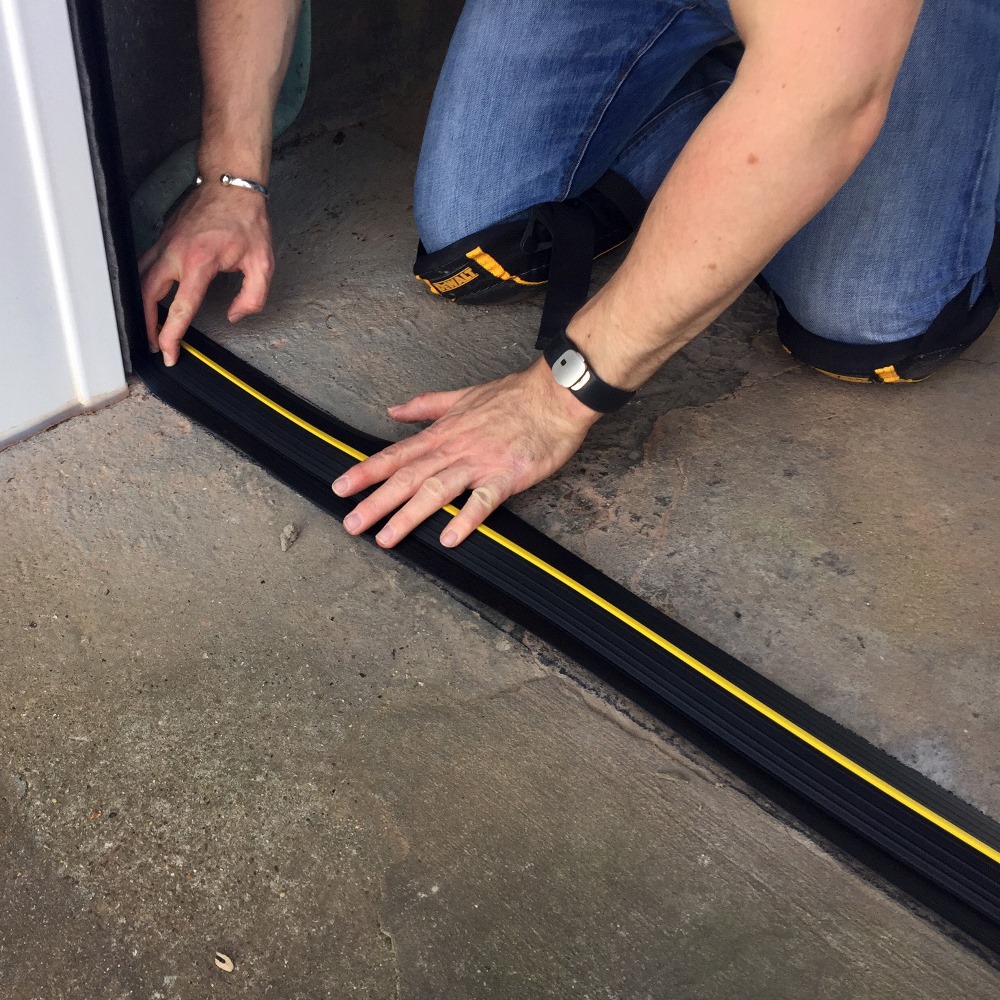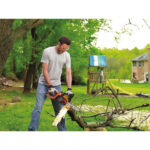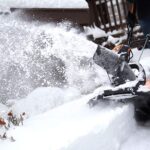Garage door bottom seals are an important component for any garage. They serve the vital purpose of sealing the gap between the bottom of your garage door and the floor. This prevents leaves, dirt, water, snow, cold air, bugs and small animals from entering your garage space.
Having a proper seal at the bottom of your garage door provides many benefits. It helps insulate your garage, keeping it warmer in winter and cooler in summer. The seal also reduces energy costs by preventing conditioned air from escaping. Additionally, it keeps pests out of your garage and protects your stored items from getting wet or dirty.
Replacing worn or damaged garage door bottom seals should be part of regular garage maintenance. Seals degrade over time from exposure to weather and from opening and closing the door. If your current seals are ripped, cracked or missing sections, it’s time to install new ones. Doing so will restore the seal and deliver the benefits mentioned above.
Table of Contents
Types of Garage Door Bottom Seals
There are several types of seals that can be installed along the bottom of your garage door to help prevent drafts, moisture, dirt and pests from entering your garage. The most common types include:
T-Shaped Seals
T-shaped seals, also called weatherstripping, are made from materials like vinyl, rubber or brush and fit into a T-shaped channel along the bottom of the garage door. The vertical part of the T-shape fits into the channel, while the horizontal part presses against the ground to form a seal. T-shaped seals are one of the most effective options.
Vinyl Seals
Vinyl seals are inexpensive and effective at sealing out drafts. The vinyl material is flexible and able to conform to uneven ground surfaces. Vinyl withstands exposure to the elements well. The main downside is that vinyl seals tend to wear out faster than other materials.
Rubber Seals
Rubber garage door seals are durable and flexible. They come in various densities, with higher density rubber offering a tighter seal. Rubber seals hold up well to compression and expansion and maintain their sealing properties in hot and cold weather. Rubber seals range from low cost to premium solutions.
Brush Seals
Brush seals use flexible bristles that press against the ground to block air gaps. Nylon brush seals are affordable and easy to install. The bristles can bend to fit uneven surfaces. However, brush seals are more prone to wear and may allow more moisture and pests inside than other seal types. The bristles must be kept clean and free of debris.
Benefits of Garage Door Bottom Seals
Garage door bottom seals provide several important benefits:
Better Insulation
Adding a bottom seal to your garage door helps insulate your garage by preventing outside air from entering along the bottom of the door. This adds an extra layer of protection against drafts, keeping your garage warmer in winter and cooler in summer. The seal acts as a barrier against the elements, helping regulate the temperature inside your garage.
Prevent Bugs/Debris
A bottom seal blocks bugs, leaves, dust and other debris from blowing under your garage door and into the garage interior. This keeps your garage cleaner and prevents bugs from nestling in. Without a bottom seal, all sorts of unwanted pests and mess can sneak into the garage. A tight seal along the bottom creates an impenetrable barrier.
Reduce Noise
An effective bottom seal reduces noise by preventing sound from traveling under the door. Traffic noises from outside are muffled, and sound from inside the garage is less likely to escape. This adds privacy and peace of mind, allowing you to work in the garage undisturbed. The seal dampens vibrations and buffers noise transfer for a quieter environment.
Considerations When Choosing a Garage Door Bottom Seal
When selecting a new garage door bottom seal, there are a few key factors to consider:
Door Type
The type of garage door you have will determine the kind of bottom seal that will fit. There are specific seals made for:
- Sectional roll-up doors
- One-piece tilt-up doors
- Swing-up doors
Be sure to check the product description to ensure compatibility with your door type.
Climate
Think about the climate you live in as well. Do you experience cold winters with snow and ice? Look for insulated vinyl seals or brush seals to prevent drafts. In warmer climates, a basic rubber seal will suffice.
Budget
Garage door seals range in price from $10 to $100 or more. More expensive ones tend to be made of higher quality materials but you can find affordable options as well. Set a budget and look for good value.
Ease of Installation
Many seals come with self-adhesive backing for easy DIY installation. Some attach with screws or nails. Make sure you can install the seal yourself or determine if you need to hire a pro.
Choosing the right garage door bottom seals involves selecting the appropriate seal design for your door type, climate needs, budget and installation abilities. Doing some research will ensure you find the ideal seal.
How to Measure for a Garage Door Bottom Seal
Measuring for a new garage door bottom seal is an important step to ensure you get the right size seal for your door. Here are the key things to measure:
- Measure width of door – Use a tape measure to measure the full width of your garage door along the bottom. Record the exact width in inches or centimeters. Measure in several spots and use the smallest width.
- Note any uneven surfaces – Inspect the bottom of your garage door and note any uneven surfaces or gaps. The bottom seal will need to be flexible enough to conform to these. Make note of the largest gap or uneven surface.
- Measure thickness of door – Use calipers or a tape measure to determine the exact thickness of your garage door along the bottom. This will help determine what size bulb seal you need.
- Check seal type – Existing seals may be adhered with adhesive, inserted into a slot, or attached with a retainer. Make note of what type you have to get the right replacement.
- Note material – Many seals are made of vinyl, rubber or foam. Check the existing material and get the same for replacement.
Taking accurate measurements before buying a new garage door bottom seal ensures you get an exact fit seal that seals properly against the elements. It’s worth taking a few minutes to measure carefully.
Installing a New Garage Door Bottom Seal
When it’s time to replace your garage door’s bottom seal, the process is relatively straightforward. Here are the key steps:
Remove the old seal – Start by carefully prying up the old seal from the bottom of the garage door. Use a flathead screwdriver and work slowly to avoid damaging the door. The seal is usually attached with small nails, so you’ll need to pull these out as you work your way across.
Clean the door’s surface – Once the old seal is removed, thoroughly clean the bottom of the garage door with a cloth and mild detergent. This removes any dirt, debris or old adhesive. Allow the surface to fully dry before moving on.
Attach the new seal – Peel off the backing paper from the new seal. Carefully press the adhesive side of the new seal to the bottom of the garage door, starting at one end and working across. Apply firm pressure as you go to ensure a tight bond. Use a rubber mallet to tap the seal into place if needed. Attach any included fasteners per the manufacturer’s instructions.
Trim excess – If the new seal is longer than your door, use tin snips to trim off any excess length. Make sure the seal meets neatly at the edges with no overlap.
And that covers the key steps for replacing your garage door’s bottom seal. Taking your time to remove the old seal and properly install the new one will help ensure a good fit and seal.
Maintaining and Replacing Garage Door Bottom Seals
Garage door bottom seals take a beating and wear out over time. It’s important to inspect them regularly to ensure they are still providing a good seal. Look for cracks, gaps, or sections that appear flattened or worn. Also check for areas where the seal is no longer flush against the ground.
Test the seal by placing a piece of paper underneath it, closing the door, and trying to pull the paper out. If it slides out easily, the seal is not making proper contact anymore.
Replace seals immediately if they become loose, cracked, have large gaps or are otherwise compromised. Don’t wait until they completely fail or fall off to replace them. The sooner a worn seal is replaced, the less likely moisture, leaves, dirt and pests will invade the garage.
Replacing just the rubber seal strip is an easy DIY project. New seal strips come in standard sizes and can be cut to fit. Simply pull out the old seal and use a putty knife to scrape away any remaining adhesive before installing the new one. Apply a bead of silicone caulk to the back to hold it in place.
For full garage door bottom seal replacements, hire a professional installer. They have the expertise to properly measure, fit and adjust new seals for an optimal fit and performance.
Troubleshooting Garage Door Bottom Seal Issues
Garage door bottom seals can develop issues over time that impact their performance and longevity. Here are some common problems to watch out for:
Drafts or Gaps
If you notice cold air or drafts coming into your garage, it likely means the bottom seal is no longer making a tight seal along the garage floor. Causes can include:
- The seal is damaged or worn out
- The seal has become dislodged from the garage door
- There is debris, such as rocks or leaves, stuck under the seal
Inspect the seal and reattach or replace it as needed to resolve drafts. Make sure the garage floor is clean and free of debris as well.
Noise When Opening or Closing
Loud noises like scraping, squeaking, or banging when you operate your garage door can indicate an issue with the bottom seal. This often happens when the seal has become misaligned, fallen down, or is rubbing against the ground.
Carefully realign the seal or use a rubber mallet to tap it back into place. Worn or rigid seals may need replacing. Lubricating the seal with silicone spray can also help reduce noises.
Rips, Gouges or Damage
Bottom seals are exposed to damage from rocks, debris, car tires, snow, ice, and regular wear and tear. Inspect seals periodically for cuts, tears, cracks, or flattened sections. Even small rips or holes can allow drafts, moisture, bugs and pests to get in.
Use sealant or caulk to patch small holes. For larger damage, the bottom seal will need to be replaced. Installing a more heavy duty or rugged seal can help prevent future damage.
Pest Infestations
If you notice insects, spiders, mice or other pests getting into your garage, it likely means there are gaps in the bottom seal they are using to get in. Damaged or ill-fitting seals provide an easy access point for pests.
Replace damaged seals and ensure a tight fit all along the garage door to exclude pests. Door sweeps with brush or vinyl fins provide an extra deterrent. Seal any cracks in the foundation and use traps or repellents if needed.
Checking for and addressing any bottom seal issues quickly can help improve insulation, reduce noise, prevent damage, and keep unwanted pests out of your garage. Proper maintenance and replacement of worn seals is key for optimal performance.
Cost of Replacing Garage Door Bottom Seals
Replacing the bottom seal on your garage door is an affordable project that can improve energy efficiency and reduce noise. On average, homeowners pay $150-$300 for parts and labor to replace garage door bottom seals. However, costs vary based on several factors:
- Seal type – Basic vinyl seals are the most affordable option at $3-$8 per foot. Rubber seals provide better insulation for $4-$12 per foot. Commercial grade seals made of materials like aluminum and PVC cost $6-$15+ per foot.
- Door size – Larger multi-car garage doors require more seal material, driving up costs. Standard 16’x7′ doors need 16-20 feet of seal which is cheaper than larger doors needing 30+ feet.
- DIY vs professional installation – Homeowners can save on labor by installing seals themselves. This requires about 1-2 hours plus tools. Hiring a pro averages $70-$150 per hour for installation.
- Brand – Major manufacturers like Clopay, Overhead Door, and Wayne Dalton charge more for their bottom seals. Opting for lesser known brands can provide cost savings.
- Existing frame condition – If the bottom of the garage door frame is damaged or needs repair, this can add $100 or more to the project costs.
With some handy DIY skills, replacing garage door bottom seals is an affordable maintenance task that can make a home more comfortable. Carefully measure the existing frame, purchase quality seals, and properly install them to reap the benefits of a weathertight, insulated garage door.
Conclusion
Proper garage door bottom seals are an important component of any garage door system. They provide insulation, reduce energy costs, help block debris and pests, and reduce noise. Choosing the right seal, whether rubber, vinyl, or brush style, and installing it correctly ensures your garage door functions properly for years to come.
Maintaining and replacing worn seals as needed will maintain the benefits they provide. Damaged or missing seals can cause bigger problems over time and cost more in repairs. Investing in quality materials and proper installation is well worth it for improved security, protection from the elements, energy savings, and noise reduction that good seals provide. Keeping your seals in good working order improves your garage door’s performance and extends its lifespan.



